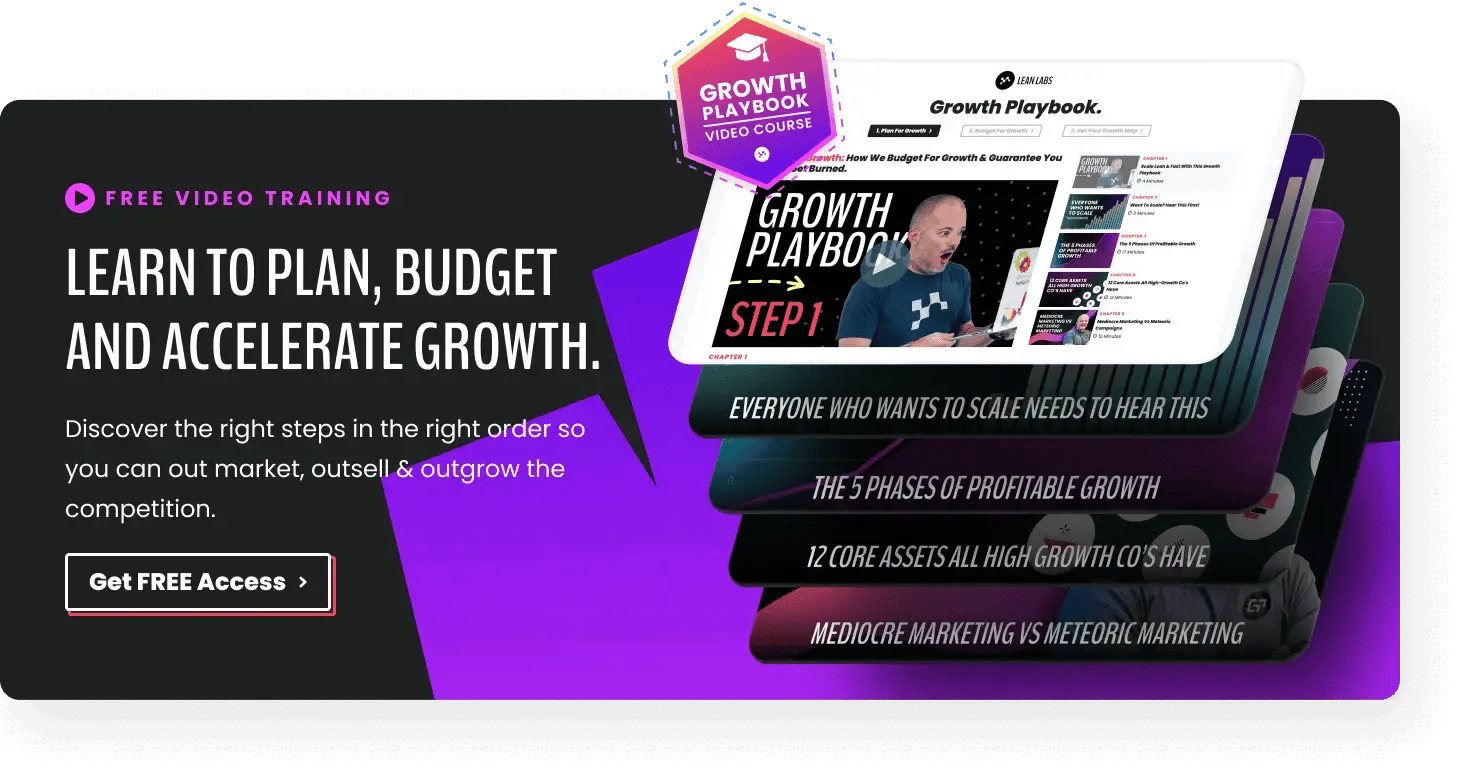Imagine a soccer team where defensive players don’t talk to midfielders, and offensive players do their own thing entirely.
There would be no cohesion, no strategy for counter-attacking, and no flow.
They wouldn’t be able to work towards the same goal: Scoring more goals than their competitor. We look at companies similarly.
Traditional marketing departments work independently from other parts of the organization.
With the right people and processes, your growth marketing team will become the organization’s biggest revenue driver.
However, the journey of building a successful growth marketing team comes with challenges.
In that time, we’ve overcome many difficult challenges.
We put this article together to help you avoid these same struggles and face them confidently if they do arise.
What is a Growth Marketing Team?
A growth marketing team brings together marketing, sales, design, and development teams to collaborate and optimize every lever of the growth engine.
The Six Levers of Growth must all be in operation at peak performance.
Awareness focuses on bringing the right kind of traffic to your website. It feeds Acquisition which is the process of turning traffic into leads. Acquisition feeds Activation, where you nurture and qualify leads further, converting them into paying customers.
Activation creates Revenue, the number of sales-qualified leads you close.
Next, growing is nearly impossible if you don’t focus on Retention. You need customers to stick around long enough to delight them.
Finally, the sixth lever is Referral. Your customers are your best marketers.
Can you see how the members of the entire growth marketing team collaborate to drive growth? Marketers focus on generating brand awareness and attracting qualified leads.
They drive leads to sales teams, who sell the right deals to the right people and drive retention and results.
As well as marketers and salespeople, designers and developers create a great experience for customers on your website and with your product, leading to a glowing reputation.
And guess what? An excellent reputation leads to referrals and increases awareness.
Because there are fewer silos, you have a team that can identify where the friction is between these levers and test methods to reduce friction and create a seamless customer experience.
Now you know what a growth marketing team is, what challenges will come up when you build a team?
1. How Do You Hire the Best People?
Hiring for a growth marketing team is challenging because you need process-focused yet creative people.
To stay ahead of the competition, you need marketers who are willing to think outside the box, take risks, test new channels, and consistently learn.
For example, a growth marketer might have succeeded using specific tactics, but they won’t consider that their only method.
The singular focus is driving growth for their clients, so they’ll consider all the tools available to them to build a strategy.
Hiring based solely on skill is a mistake. Anyone can learn skills, but not everyone can think differently or is willing to try new things. Hiring people who have created or built something is a better play.
Growth marketers, designers, and developers need the requisite skills.
Still, just as important is that they fit your culture, are willing to be accountable for their work, and want to be part of a collaborative unit. Consider all of this before you rush to hire.
2. Leaving the Silo Mentality Behind
It might seem inevitable that silos form between departments. A lack of dialogue between teams leads to double work and miscommunication, and miscommunication leads to the blame game.
This is often evident between marketing and sales teams.
Traditionally, sales and marketing teams live in separate worlds. But with the focus on all six levers of growth, you can create a straightforward buyer journey that encompasses every role and team.
With open lines of communication, you’ll break down silos and inspire collaboration.
You can even have a marketer sit in on sales calls. Imagine if marketers knew customers’ most common objections on a sales call.
They can then create content that overcomes objections and makes the sales team’s job easier.
Using a sales enablement tool like HubSpot ensures that every team member has access to metrics that matter.
You can track results, through team-wide meetings, coordinate growth efforts in sprints, getting the whole team to contribute.
3. Who Will Take the Lead?
You won’t have an engaged and invested team without someone leading them. You’ll revert to what worked in the past. Silos will reappear, you’ll lack direction, and you’ll struggle to plan campaigns.
Related: 3 Examples of How To Structure A Growth Team For Rapid Growth in 2022
You need a Growth Leader. Your head of growth aligns the team, ensuring they work towards the same goals, communicate well, and collaborate to produce results.
Growth leaders possess marketing knowledge, but their most significant strength is keeping things organized and running smoothly.
For this reason, they need to be process-oriented and enjoy working toward a vision and long-term goals. They’re also not afraid to get their hands dirty!
4. Leaning Too Heavily on Tasks Instead of Goals
You won’t get buy-in from your team if you just give them tasks to do. What are the goals of your campaigns, and what roles does your team play?
For example, a task is telling someone to handle customer complaints. A goal is to reduce customer turnover by 15 percent by quickly handling customer complaints.
Can you see the difference? You want your team to feel like they can contribute to your larger goals.
The solution is simple: Intent over instruction.
Instead of just instructing your employees to complete specific tasks, explain what you’re trying to do. Set a growth goal, and ask your team to help you work towards that goal.
Goals should be meaningful, transparent, measurable, time-bound, and strategic. Providing clear objectives helps your team think critically about the best way to accomplish them.
Maybe the task you planned isn’t the fastest or most effective way.
The more people understand the bigger picture, the more motivated they will be to help you achieve your goals as a growth team.
Building A Successful Growth Marketing Team
Growth is the North Star metric. Build a team focused on achieving growth for your own company and your clients.
To do so, embrace the idea of a cross-functional team, data-driven marketing, and building a culture of experimentation to work towards massive growth.
We know it’s not easy to break with tradition, and maybe you’re not ready to build a growth marketing team on your own.
If you can’t build an in-house team, an outsourced or Hybrid Growth Team like Lean Labs is the answer.
Why hybrid? We don’t believe in completely outsourced marketing. We work with our clients, not for them. It’s a collaborative process.
We expect partnership and effort. Sound good?
If you want to see exactly what we do and how we help our clients achieve massive growth, check out the Growth Playbook.








